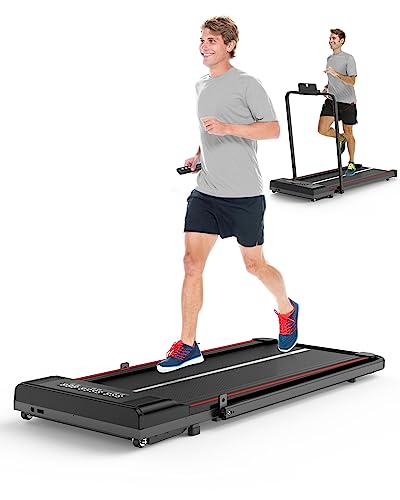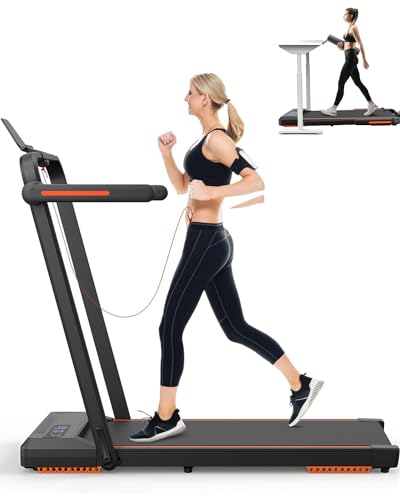
Treadmill Sale
Add a review FollowOverview
-
Founded Date September 5, 1940
-
Posted Jobs 0
-
Viewed 79
Company Description
Treadmill UK Strategies That Will Change Your Life
Understanding Treadmills: Types, Benefits, and Considerations
Treadmills have ended up being an integral part of fitness culture, using a hassle-free solution for individuals seeking to enhance their cardiovascular fitness without the need for outside areas or weather considerations. With a selection of features and models offered, potential buyers should be well-informed to make the very best choice. This article aims to provide a thorough summary of treadmills, consisting of the different types, advantages, and elements to think about when purchasing one.

The Different Types of Treadmills
1. Handbook Treadmills
Manual treadmills are powered by the user instead of an electric motor. They require no electricity and typically include a basic design with less moving parts.
Advantages of Manual Treadmills:
- Cost-effective
- Portable and lightweight
- No dependence on electrical power
Downsides:
- Limited features
- Usually lack slope options
2. Motorized Treadmills
Motorized treadmills are the most typical type, powered by an electric motor. They typically offer numerous features such as programmable workout routines, adjustable slopes, and greater weight capabilities.
Advantages of Motorized Treadmills:
- Smooth operation and constant traction
- Versatile with innovative functions for diverse exercises
- Choices for slope and decrease settings
Drawbacks:
- Higher cost compared to manual treadmills
- Need electrical energy and may increase electric bills
3. Folding Treadmills
Folding treadmills are developed for simple storage, making them perfect for those with restricted space.
Advantages of Folding Treadmills:
- Space-saving design
- Easy to carry and save
- Ideal for home usage where space is at a premium
Disadvantages:
- Typically may have a smaller sized running surface area
- Weight limitation might be lower than non-folding designs
4. Commercial Treadmills
These treadmills are constructed for sturdiness and efficiency, normally found in gyms and physical fitness centers. They are created for high usage rates and come with innovative functions.
Benefits of Commercial Treadmills:
- Extremely durable and typically supported by warranties
- Complete range of features, including sophisticated training programs
- Ideal for durable workouts
Downsides:
- Higher cost point
- Might be too big or heavy for home usage
| Type of Treadmill | Power Source | Normal Features | Suitable For |
|---|---|---|---|
| Handbook Treadmill | None | Standard workout metrics | Minimalist users |
| Motorized Treadmill | Electric | Programmable workouts, incline choices | General fitness enthusiasts |
| Folding Treadmill | Electric | Space-saving design | Home users with minimal space |
| Industrial Treadmill | Electric | Advanced training programs | Gym facilities |
Benefits of Using a Treadmill
Treadmills provide numerous advantages for individuals wanting to enhance their physical fitness levels or preserve an athletic routine.
1. Convenience
Owning a treadmill enables users to exercise at their own schedule, getting rid of reliance on weather. It supplies flexibility, as exercises can occur day or night.
2. Personalized Workouts
Many contemporary treadmills feature adjustable programs to accommodate beginners and seasoned athletes. Users can adjust speed, slope, and workout period to optimize the effectiveness of their sessions.
3. Tracking Progress
Most treadmills come equipped with digital display screens that tape essential stats such as range, speed, calories burned, and heart rate. Monitoring this information assists users track their physical fitness progress gradually.
4. Lowered Impact
Treadmills frequently supply a cushioned surface area that can lower joint effect compared to running on difficult outside surface areas, making them an appropriate option for individuals with joint concerns or those recovering from injuries.
5. Range of Workouts
Users can take part in various workouts on a treadmill, hometreadmills from walking and running to interval training and speed work. Some machines even offer built-in courses that imitate outside terrains.
Factors to consider When Buying a Treadmill
When buying a treadmill, people ought to think about several factors to guarantee they make a notified decision.
1. Area Requirements
- Step Available Space: Before selecting a model, procedure where the treadmill will be put to guarantee it fits conveniently.
- Think About Folding Options: If space is a concern, consider investing in a folding treadmill for hassle-free storage.
2. User Weight and Height
- Examine the weight capacity of the treadmill to accommodate its desired users.
- Guarantee that the belt length is suitable for users’ strides, especially for taller individuals.
3. Functions and Technology
- Assess whether innovative functions like heart rate screens, Bluetooth connectivity, and built-in training programs are essential for the designated user.
- Examine easy to use interfaces and item reviews on display quality.
4. Guarantee and Customer Support
- Evaluation guarantee options to understand what is covered and for how long. Some models might use extended warranties or warranties for parts.
- Evaluate the brand’s track record for client support in case of malfunctions or questions.
5. Rate Range
- Consider your budget plan but keep in mind that cheaper models may lack features, sturdiness, or service warranty support.
- Check out funding options if investing in a higher-end design.
Frequently asked questions About Treadmills
1. What is the typical life expectancy of a treadmill?
Generally, a top quality treadmill can last in between 7 to 12 years, depending on usage, maintenance, and construct quality.
2. What is the very best treadmill brand name?
Popular brands consist of NordicTrack, Sole Fitness, Precor, and LifeSpan, each understood for their quality and client fulfillment.
3. Can I use a treadmill for walking?
Yes, treadmills are perfect for walking, running, or running, making them versatile for users of all physical fitness levels.
4. How often should I service my treadmill?
Regular maintenance is usually recommended every 6 months to make sure ideal performance and longevity.

5. Is it okay to work on a treadmill every day?
While operating on a treadmill daily is acceptable for some, it’s wise to integrate rest days or alternate workouts to prevent possible overuse injuries.
In conclusion, treadmills remain a popular option for fitness enthusiasts trying to find flexibility and customizability in their workout regimens. By comprehending the various types offered, their advantages, and crucial elements to think about during purchase, users can make an informed decision that lines up with their physical fitness goals and lifestyles.